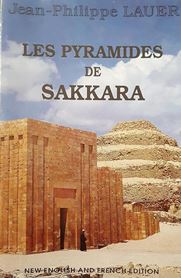| Main » Ad Board » ДРЕВЕН ЕГИПЕТ И АФРИКА » Архитектура |
| 25.06.2024, 06:33 | |
Емблема на Сакара, некропола на Мемфис - най-старата столица на обединения Египет е огромната стъпаловидна пирамида на Джосер-Нечерихет (III династия), която доминира над целия архитектурен комплекс. Извън академичните среди и тези на любителите на египтологията обаче малцина знаят, че в Сакара има още много величествени сгради: пирамидите на Сехемхет (III династия), Унас и Усеркаф (V династия), Тети (VI династия), гробниците-мастаби на велможите Ти и Птах-хотеп, както и построеният много по-късно през епохата на Птолемеите Серапеум.
| |
| Views: 651 | Placed till: 25.07.2024 | Rating: 0.0/0 | |

